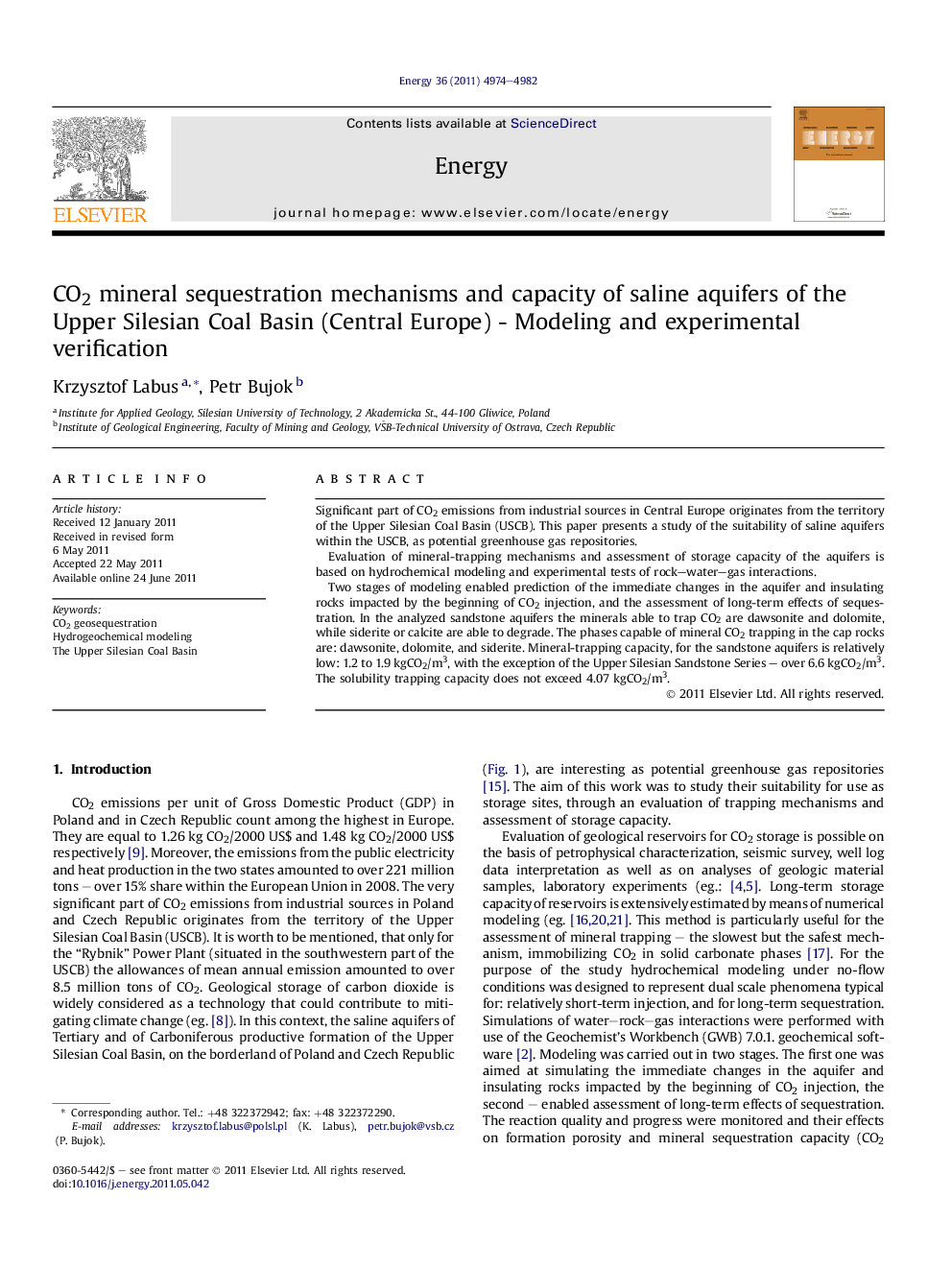| Article ID | Journal | Published Year | Pages | File Type |
|---|---|---|---|---|
| 1734262 | Energy | 2011 | 9 Pages |
Significant part of CO2 emissions from industrial sources in Central Europe originates from the territory of the Upper Silesian Coal Basin (USCB). This paper presents a study of the suitability of saline aquifers within the USCB, as potential greenhouse gas repositories.Evaluation of mineral-trapping mechanisms and assessment of storage capacity of the aquifers is based on hydrochemical modeling and experimental tests of rock–water–gas interactions.Two stages of modeling enabled prediction of the immediate changes in the aquifer and insulating rocks impacted by the beginning of CO2 injection, and the assessment of long-term effects of sequestration. In the analyzed sandstone aquifers the minerals able to trap CO2 are dawsonite and dolomite, while siderite or calcite are able to degrade. The phases capable of mineral CO2 trapping in the cap rocks are: dawsonite, dolomite, and siderite. Mineral-trapping capacity, for the sandstone aquifers is relatively low: 1.2 to 1.9 kgCO2/m3, with the exception of the Upper Silesian Sandstone Series – over 6.6 kgCO2/m3. The solubility trapping capacity does not exceed 4.07 kgCO2/m3.
► We model and experimentally test example aquifers as potential CO2 storage sites. ► In aquifers dawsonite and dolomite trap CO2, while siderite and calcite degrade. ► In the examined cap rocks dawsonite, dolomite, and siderite are able to trap CO2. ► Calculated mineral-trapping capacity of sandstones is between 1,2 and 1,9 kgCO2/m3.
